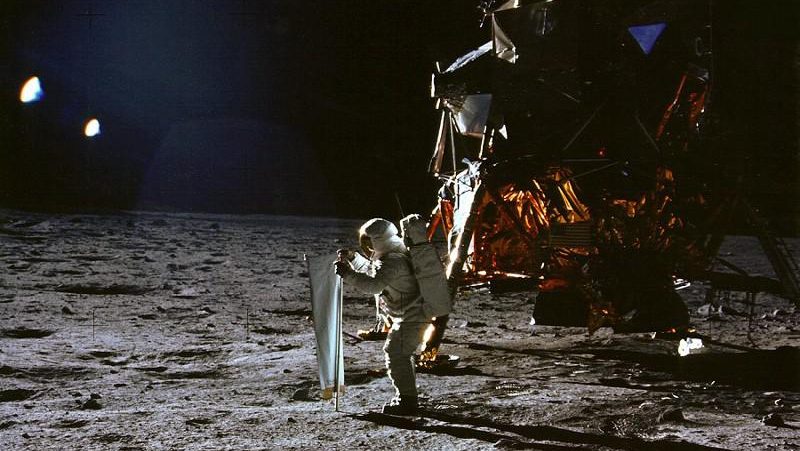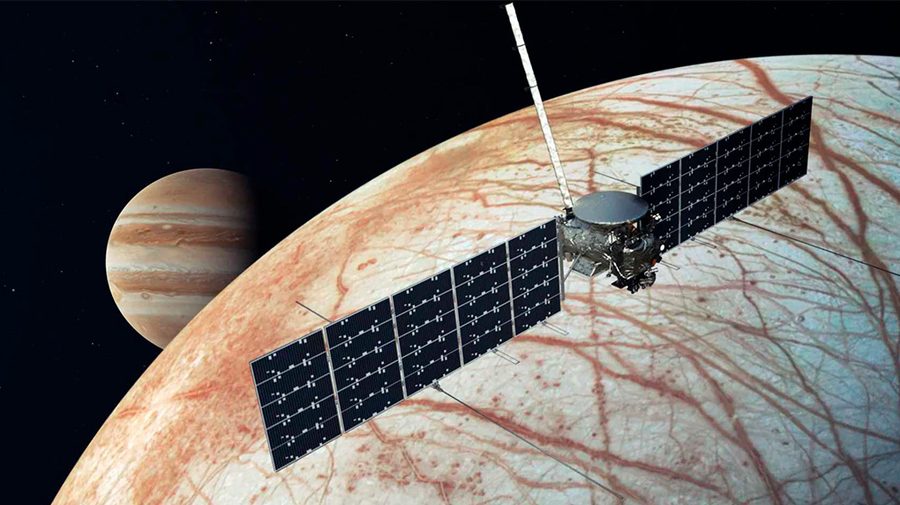The Opportunity of a Lifetime… on Mars!
The incredible story of the record-breaking red planet’s rover.
“In any field, find the strangest thing and then explore it.”
–John Archibald Wheeler
Sometimes, things get difficult. Sometimes, there are challenges you have to face that you never even expected, much less were prepared for. And sometimes, it seems like there’s no point in even holding on to hope that things will get better. But if you keep on chugging away, nothing can stop you. And that’s true no matter what you are or where you are, even if you’re an obsolete, robotic rover hundreds of millions of miles away. On Mars.
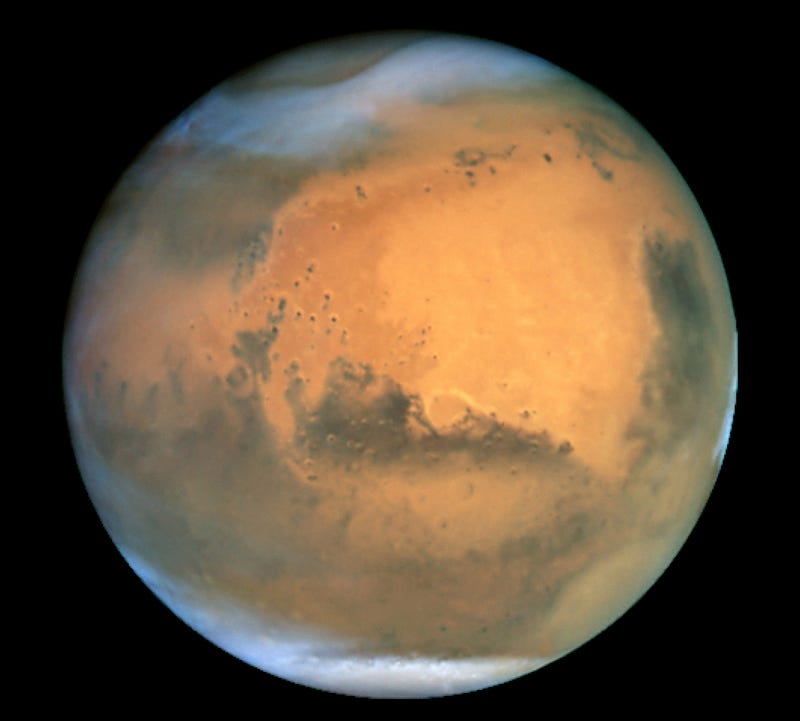
On January 24, 2004, the Mars Opportunity rover began its mission on the surface of the red planet. Despite a huge series of failures when it came to missions-to-Mars leading up to it, the combined success of the Mars Pathfinder mission along with the newly developed giant airbag system gave scientists great hope that this new generation of rover would be an unprecedented success.
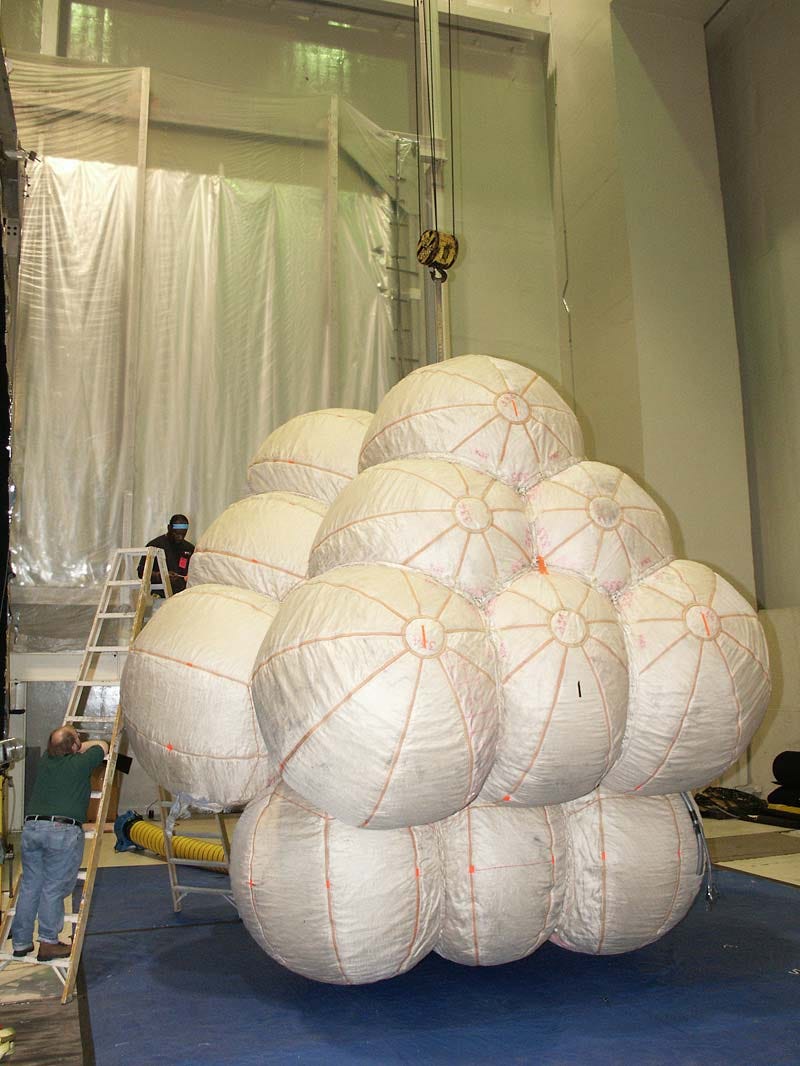
You see, Mars is very, very different from Earth in a lot of important ways. Yes, it’s red instead of blue and it’s smaller and less massive, but it has the following properties that make it an incredible challenge for landing on:
- There’s no water to splash down in; you’ve got to land on the unforgiving rocky surface.
- The atmosphere is very thin: less than 1% of what we have on Earth. Parachutes need to be huge to be even a little bit useful.
- But with so little atmosphere and a rotation period similar to Earth’s, the winds on the planet are spectacularly fast, typically in excess of 150 kilometers-per-hour.
All of that meant that this was incredibly risky. But the airbag solution was ingenious, since even though the rover weighed in at 180 kg (400 pounds), terminal velocity with the inflated airbags ought to be slow enough that it would survive the impact.
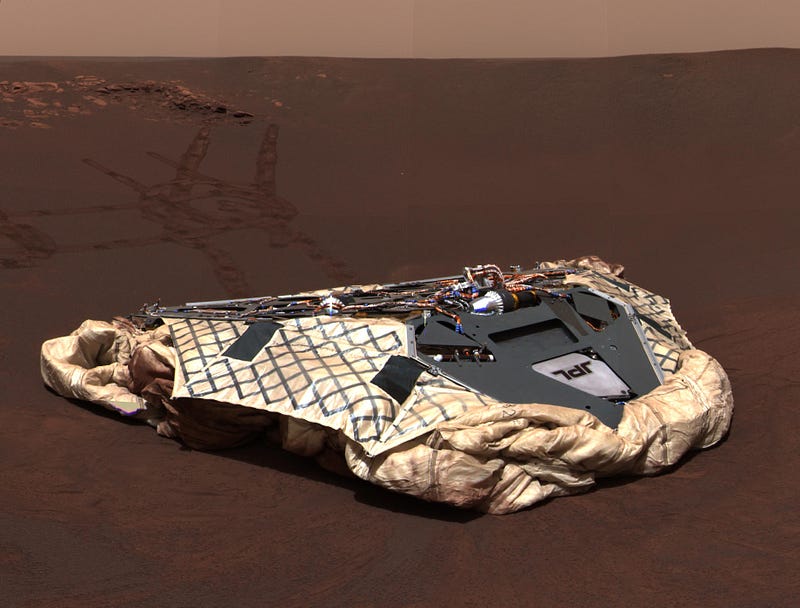
In January of 2004, both Opportunity and its twin, Spirit, successfully landed on Mars, deployed and began their journeys across the surface of our neighboring world. They were originally designed for a 90-day journey, but were over-engineered. After all, the rover from Mars Pathfinder, Sojourner, was only designed for a seven-day mission with a possible extension to 30, and yet it lived for eighty-three days.
Why couldn’t these Mars Exploration Rovers do even better?
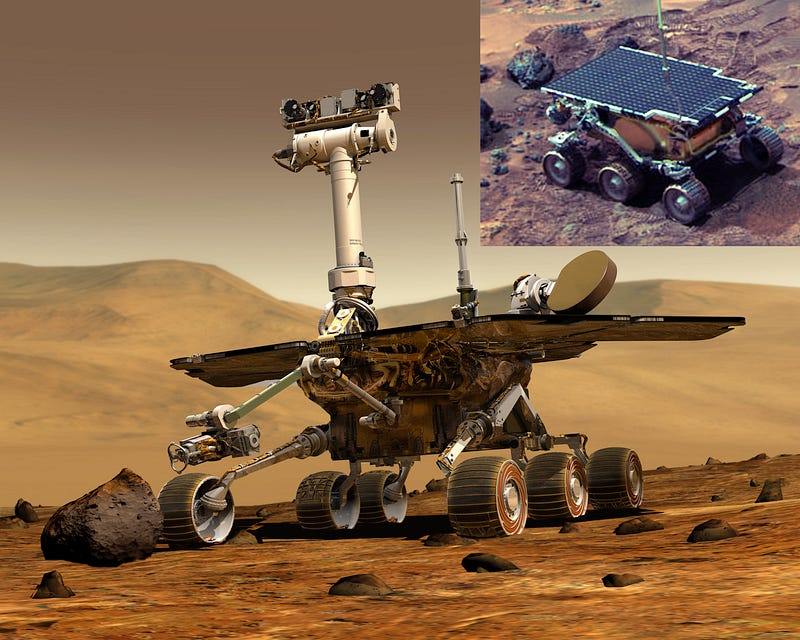
They were bigger, they were more powerful, they had more robust solar panels, and they had the advantage of seven additional years of technology development!
Despite plenty of advance testing here on Earth and countless simulations anticipating what Opportunity would face, no one quite knew exactly how the rover would perform once it arrived on the Martian surface. After all, when something’s on Mars, it’s at a typical distance of over 20 light-minutes from its controllers. This is an incredible danger, because we know that the Martian surface is riddled with hazards, and 20 minutes is far too long a time to respond to any disasters. In other words, it needed to be able to make its own driving decisions and maneuvers.
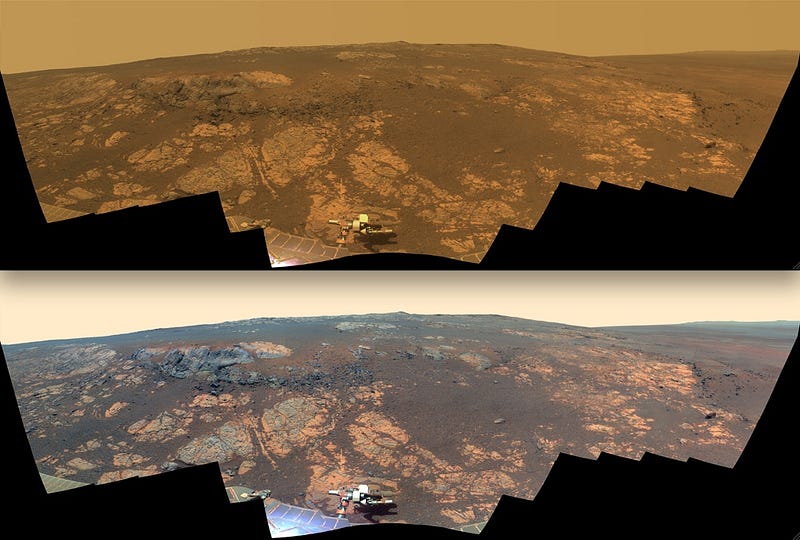
Opportunity was designed for a 90-day mission and 2.5 million turns of its wheels, powered by its on-board solar panels (during the day) and by its batteries at night. Only time would tell exactly what Opportunity would actually wind up doing.
Well, it’s been nearly 4000 days, around 80 million turns of its wheels, and a lifetime’s worth of discoveries that make Opportunity the most successful planetary science mission of all-time. And it’s still going. The panorama above — shown in both true color (top) and false color (bottom) to highlight the different features in the terrain — is just one of a myriad of images from this unforgettable mission.
While the world has moved on to focus on Curiosity, the latest generation of Mars rover, Opportunity is still going strong, and has a lifetime of achievements behind it, including a brand new one as of today.
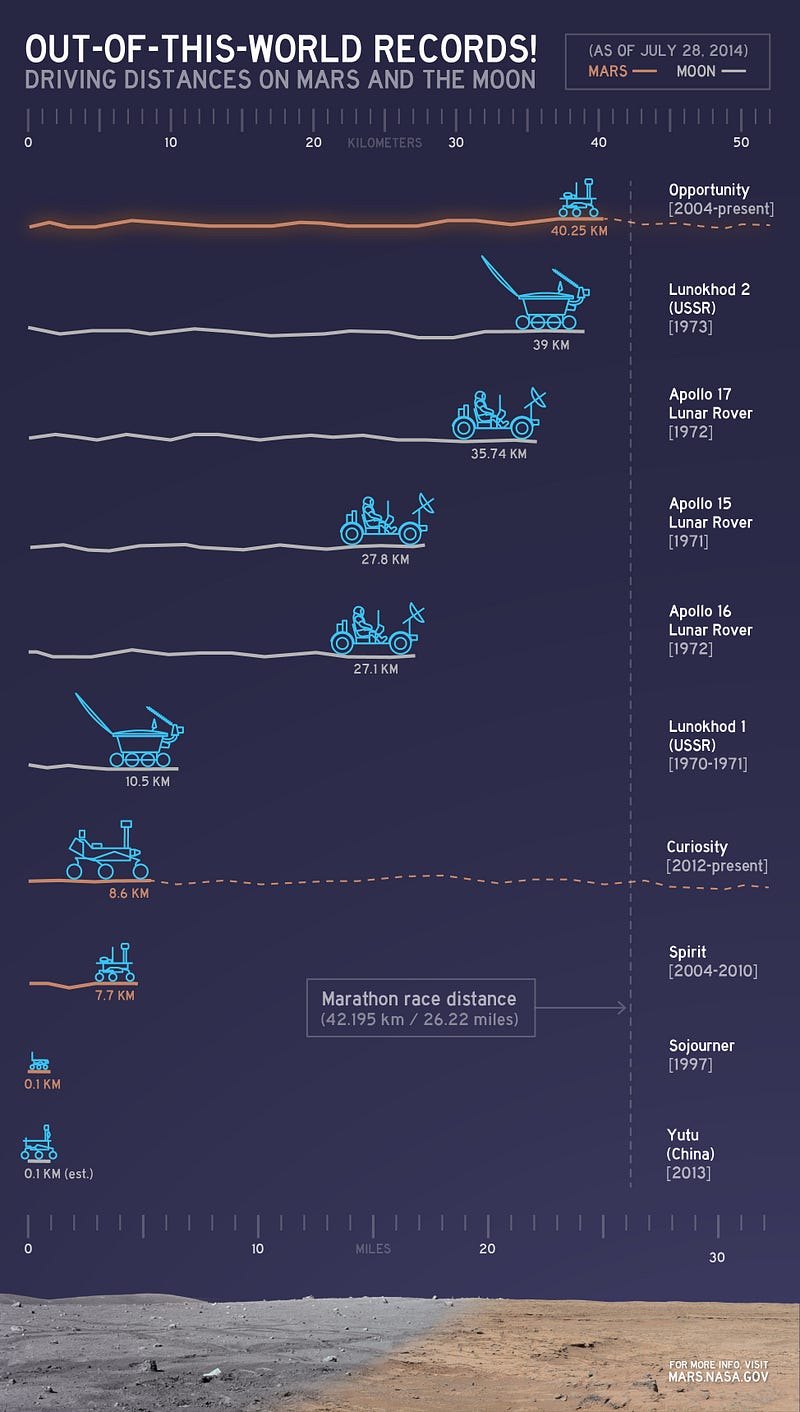
Officially, the Mars Opportunity rover has now traveled farther than any man-made device on the surface of another world ever, even including autonomous and human-driven vehicles just on the Moon! In fact, if Opportunity lasts just another six months, it will become the first vehicle to pass 26.2 miles, or marathon distance on another planet.
It’s been an incredible journey that’s taken the little rover that could more than a decade, but it’s more than worth a retrospective. Let’s take a look back.
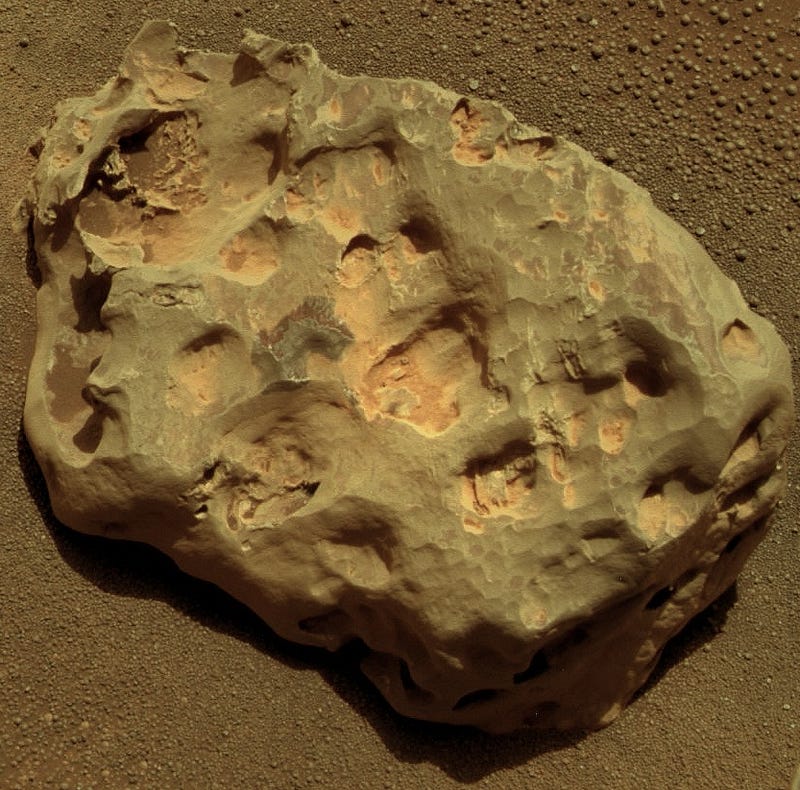
It discovered the very first meteorite — an iron-nickel fragment — on the surface of another world.
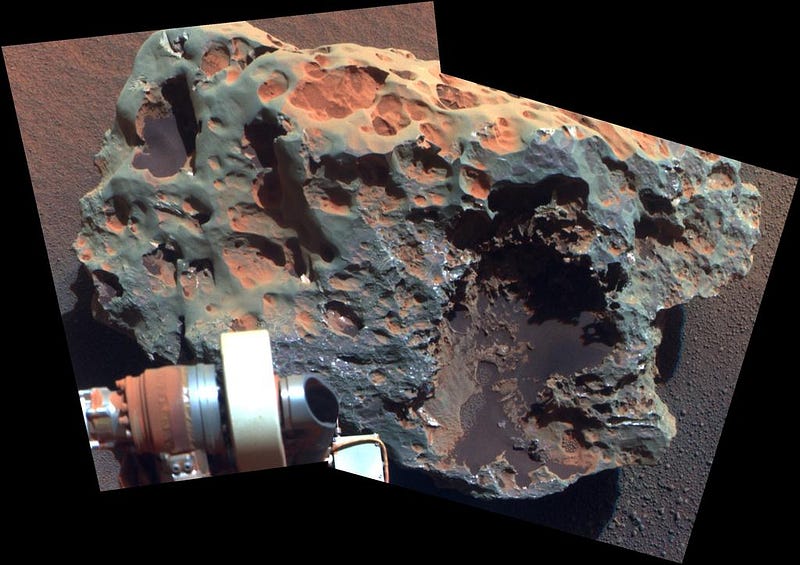
It showed, in fact, that these meteorites exhibit the same surface features that windblown sand creates on iron-nickel meteorites found in the desert here on Earth. This is exactly what you’d expect to find on Mars, whose environment very closely resembles the dry, desolate deserts of Earth.

Since it began its journey at Eagle Crater on Mars in 2004, Opportunity has taken an unprecedented journey to some spectacular places, including Endurance crater,

where Opportunity was able, for the first time, to take a look at some of the sedimentary history of the Martian surface. The hills and cliffs inside this crater are so steep that pieces of Mars’ geological history were revealed, as the photo of Burns cliff inside the crater shows.
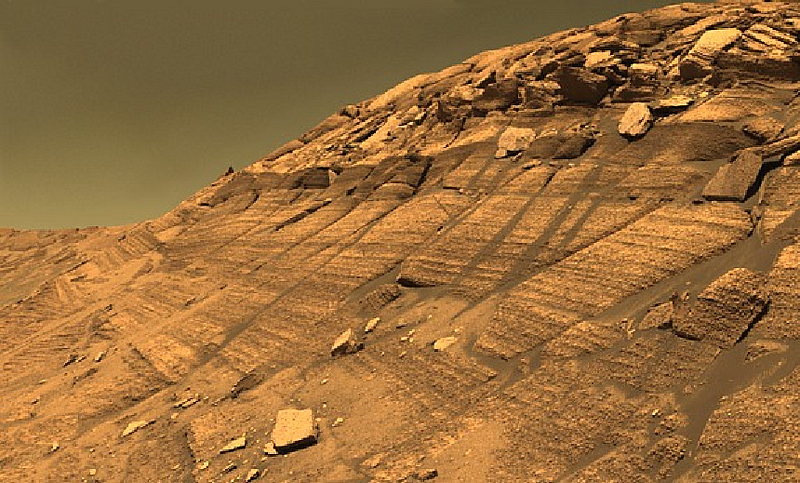
It also visited a slew of other interesting features, including the beautiful Erebus crater, with the unusual feature known as “Payson ridge” shown in the photo below.

It stopped off by Victoria Crater, which — with the false coloring — looks like it could be right out of a scene here on Earth! Below, you can see it with one of its many outcroppings: Cape St. Vincent.
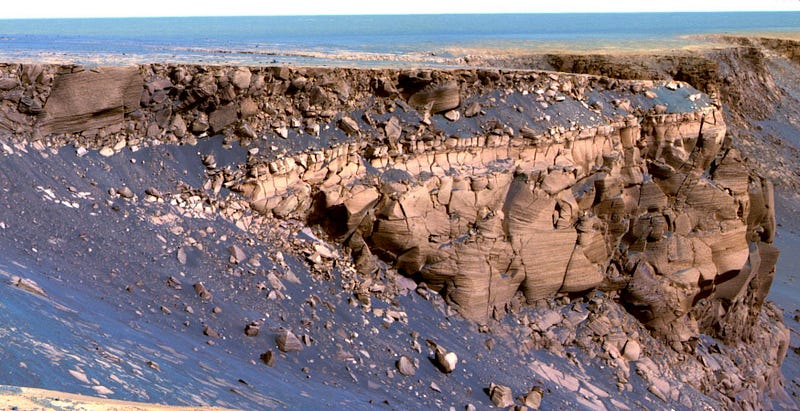
In the area surrounding Victoria Crater, as well as in a slew of other places, Opportunity found “Martian blueberries,” or hematite spheres that look to be evidence of past water on Mars.
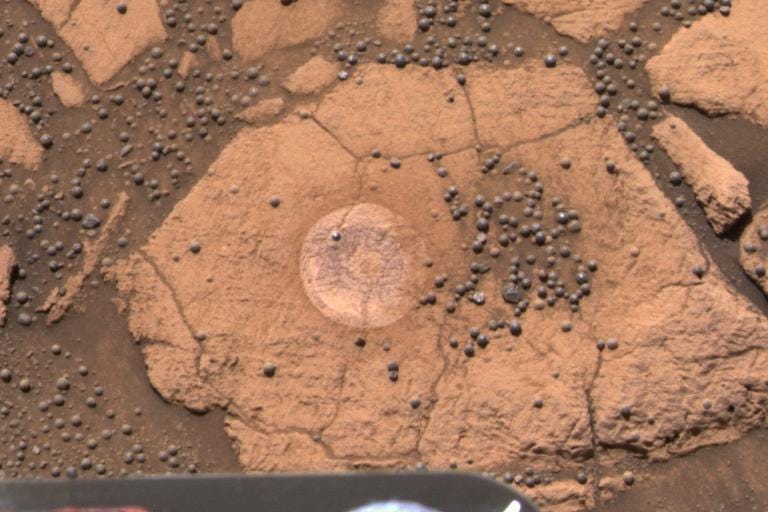
You might look at these spheres and immediately think of all sorts of non-water-based origins for them. Indeed, it’s conceivable that they could have come about through a few other geologic processes that spawned these in isolation.
But then, how would you explain that we’ve found some of them fused together?

You can’t, not without a watery past!
After visiting Victoria crater, the decision was made that Opportunity would run the first Mars-half-marathon, and head to the giganticEndeavour crater, despite the fact that its solar panels were only operating at 50%, thanks to being covered in years of Martian dust. You have to remember, that after years on the dusty surface and a completely dry atmosphere, Opportunity simply wasn’t prepared to deal with the buildup of material that would come to block the incoming sunlight. (No one had thought of Martian windshield wipers!)
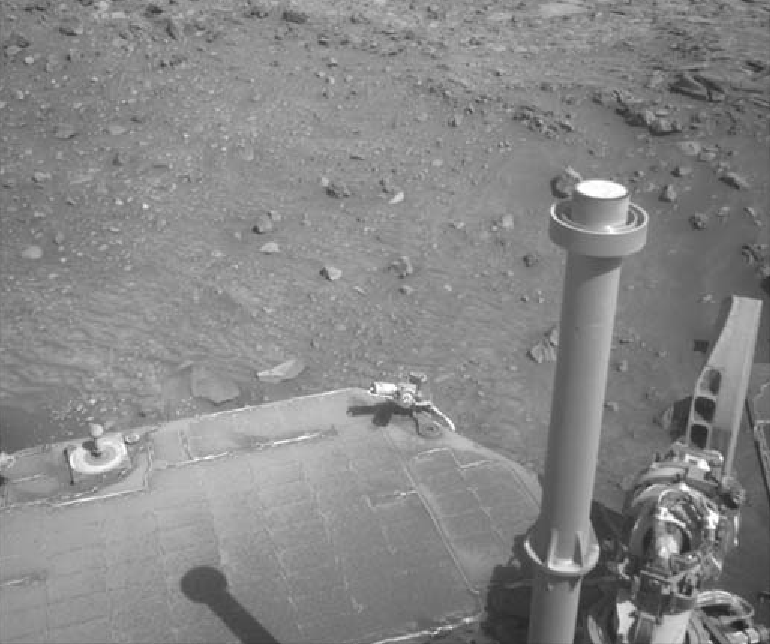
But part of how Opportunity lasted so long was just this: it got lucky.
A simple gust of wind came along and partially cleared off the panels, giving the eponymous rover the opportunity to make the spectacular journey in less time than anyone had anticipated: just three years! Here’s a rover’s-eye view of the journey.
In 2012, during the Martian winter, Opportunity took the most spectacular panorama of its entire journey: an 817-image-composite of Greeley Haven.
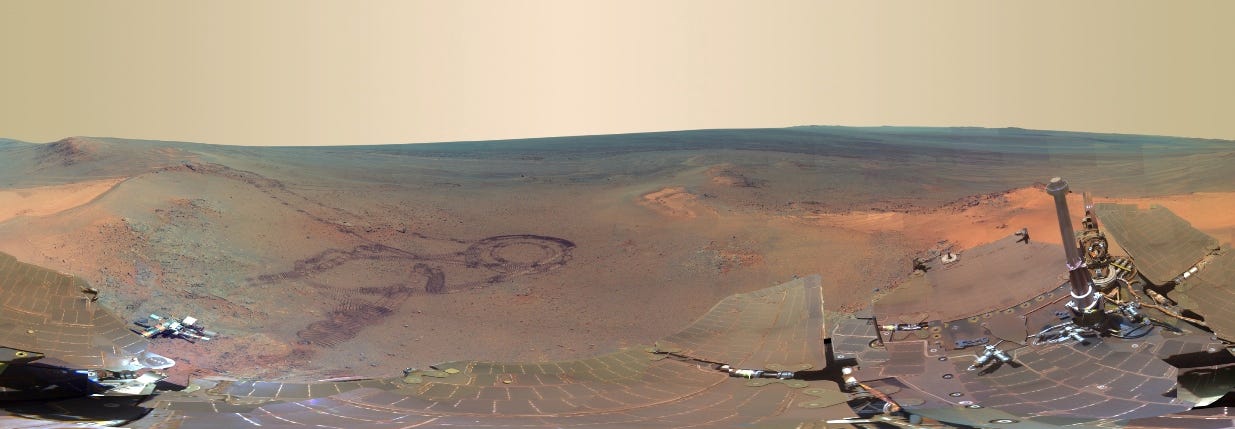
The destination, by the way, of that half-marathon journey? The largest crater ever to be visited on another world: Endeavour Crater! Since its arrival there, it’s been exploring the crater rim, and this is its path as of Sunday, the moment it broke the distance record.
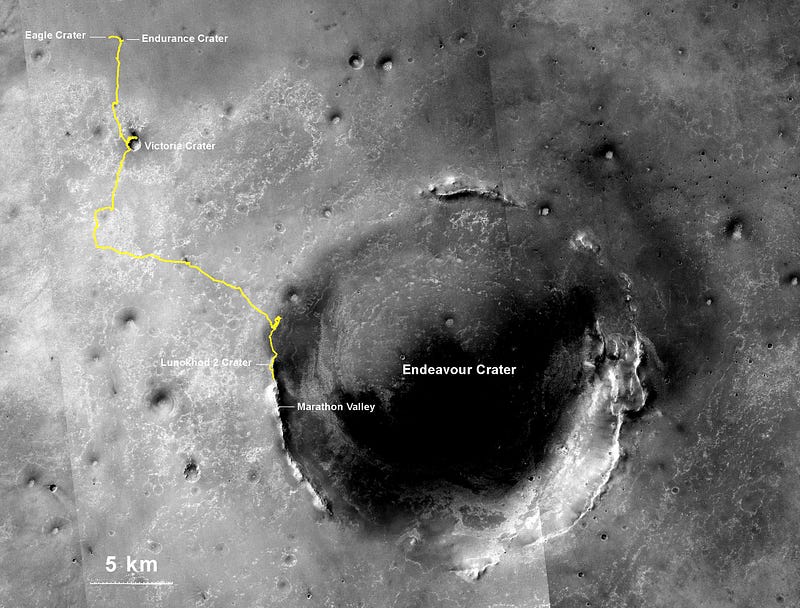
“Marathon Valley” that you see on the image above is Opportunity’s next destination, as it ought to reach it at a total mileage of — you guessed it — 26.2 miles! In the meantime, it’s continuously passing little craters, and the one that it just passed as it set the all-time rover distance record has been named Lunokhod 2 crater, after the previous record-holder.
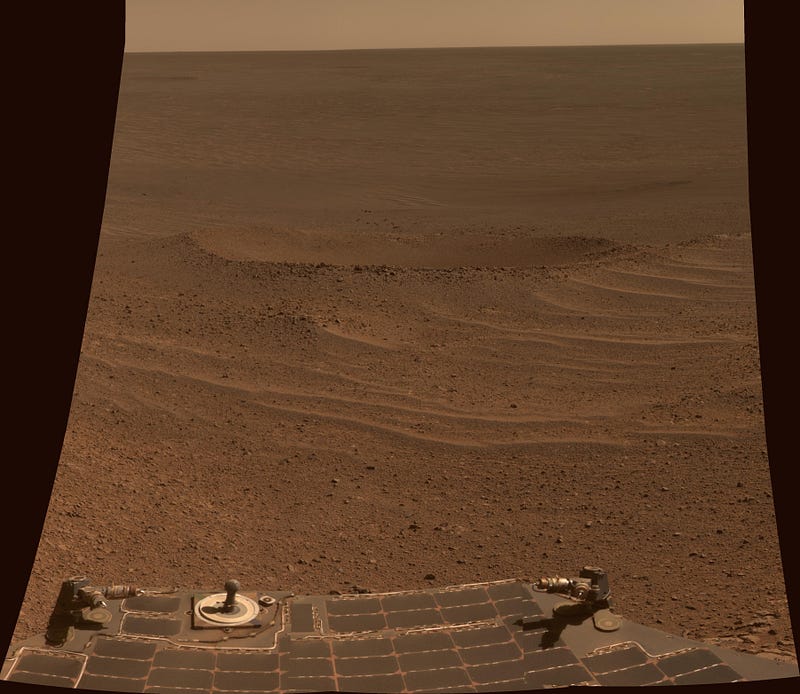
So where does Opportunity stack up in terms of Mars missions? Let’s take a look back at the attempts, and see just how remarkable it truly is.
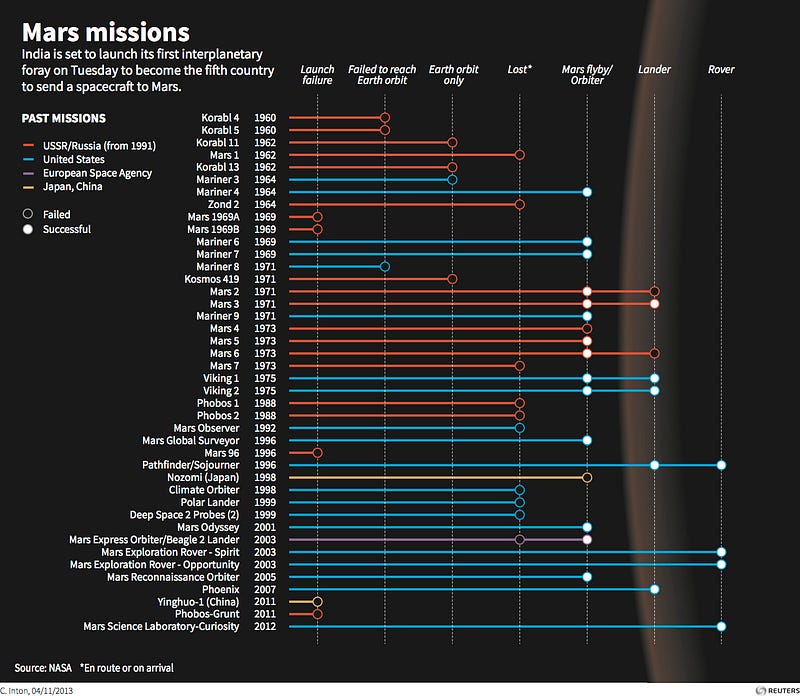
Despite the tremendous failure rate, Opportunity has overachieved beyond our wildest dreams, and continues to set records and investigate uncharted territory, providing incredibly valuable scientific, geologic and historical information about our planetary next-door neighbor. Stay tuned, because it doesn’t show signs of slowing down anytime soon!
And for those of you who want just a little more, have a look at my July 29th news broadcast about this discovery on KGW Newschannel 8’s Live@7!
Leave your comments at the Starts With A Bang forum here.
